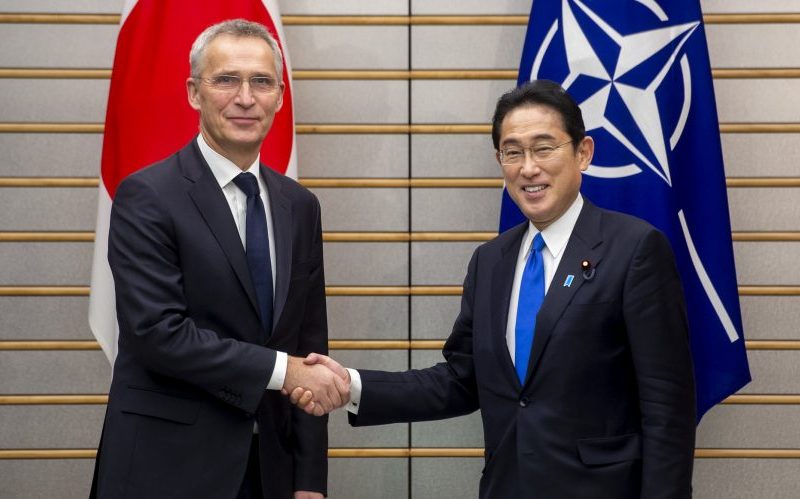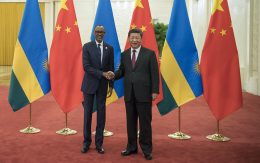In the last few weeks, a miniature object like a balloon has occupied most of the security analyses. Amid all the noise, Japan has announced its new defence strategy. 2023 is going to be a significant year for Japan, as it is holding the Presidency of G7 and additionally joining the United Nations Security Council as a non-permanent member. Japan’s new security policy is a realisation that geopolitics is changing, and it needs to be prepared to face the realities of a changing region.
Approved on 16th December, the Defence Policy contains three documents: the National Security Strategy (NSS), the National Defence Strategy (NDS), and the Defence Buildup Program. Collectively, the three documents explain the security challenges that Japan faces and the plans for how the country will respond to attacks on its land. The NSS has been revised for the first time since 2013. The new NSS has two overarching goals: to strengthen Japan’s deterrence ability and to ensure its forces are ready to fight any threat. The country plans to double its defence spending from 1% of its gross domestic product (GDP) to 2% of GDP over five years. In terms of dollars, this is an approximate increase of $50 billion a year to about $100 billion a year, which will make Japan the third largest spender after the United States and China. Before looking at the new plans, it is worthwhile introspecting Japan’s post-cold war defence strategy as it will help us to understand the importance of the new doctrine.
Japan’s post-Cold War strategy
The post-Cold War strategy can be explained through “Cultural Theory”, developed by Peter Katzenstein and Peter Berger. The theory states that Japan’s defeat in the Second World War created an atmosphere that was anti-militarist and deeply embedded in the country’s political institutions and culture. This mindset prevented the state from relying on the military force for its security and defence needs. Japan’s strong partnership with the U.S. ensured Japan that its security requirements were met. The National Defence Program Guidelines of 1976 recommended the government have a basic defence force which will be sufficient to meet its security needs. The mission of the force was not based on countering any specific threats. Japan’s security strategy was more orientated towards economics, which downgraded the notion of a stereotypical security strategy. For a country that has not fired a single shot since World War II, one may ask: what has changed so drastically that forced Japan to increase its spending?
Why Japan is coming up with a new plan?
China has built up its military muscle over the past years, which poses a grave threat to the security of Japan. Historically speaking China and Japan have a long-standing issue with Senkaku Islands in the East China Sea. Japan accuses China of suddenly making claims on the Island while China accused Japan of nationalising the Islands in 2012. In 2019, Japan identified China as the chief adversary in its defence white paper. One issue that is giving Japan’s strategic planners sleepless nights is the issue of Taiwan. The issue of Taiwan is often seen through the lens of U.S.-China tensions, but it also has a Japanese element to it. There are frequent military drills by the Chinese People’s Liberation Army (PLA) in the seas and airspace surrounding Taiwan. Last year, during Nancy Pelosi’s visit to Taiwan, China conducted large-scale military drills, simultaneously launching missiles in Japan’s territory. The main concern of Japan is that if Taiwan is captured by China, Japan’s trade routes could be blocked. Japan’s closest island is just 150 kilometres from Taiwan, therefore China could potentially capture these territories.
The world has just marked the first anniversary of the Ukraine war. No one could have imagined having a war on Europe’s territory nowadays, but the unimaginable did happen. Japan fears that the next Ukraine can be East Asia if it keeps relying on the U.S. for its security needs and does not upgrade its defence systems. Japan fears that a victory for Russia will encourage China to accelerate its efforts to unify Taiwan with the mainland. Japan’s distress from Russia comes from China’s and Russia’s declaration of a “no limits” partnership. To this effect, Japan has assisted Ukraine from the initial days of the war. Tokyo has provided Kyiv with humanitarian and financial aid. The war in Ukraine has just accelerated the efforts of Japan to ameliorate its defence strategy.
Japan has suffered through “lost decades” with almost no growth in the economy. Changing this is therefore a priority for Kishida’s government, which is evident in the new defence strategy. The NSS has an entire section on “Promoting Economic Security Policies to Achieve Autonomous Economic Prosperity.” One of the main objectives of the document is to curb dependence on other countries. Japan is heavily reliant on Taiwan to meet its demands for computer chips. Amid the rising tensions between Taiwan and China, uncertainty about supply chains may become a reality. To counter the issue, Japan is planning to regain the lost ground in the field of semiconductors.
For Japan to have growth in the economy and face challenges, it needs to have stronger defence capabilities and the increased spending on defence will play a critical part in ensuring it. The key question is what exactly Japan intends to do with its increased spending on defence.
The details of the new doctrine
Japan intends to improve its defence capabilities by buying U.S.-produced Tomahawk cruise missiles. Buying the missiles will improve Japan’s long-range strike capability. The country is surrounded by China and North Korea which have achieved rapid progress in missile-related technology and are a substantial threat to Japan. Having long-range missiles is part of the “counterstrike” strategy, which will demonstrate to China and North Korea that Japan is serious about self-defence. Japan is not only putting more money into its new defence sector but plans to have structural reforms. Under the plan, Japan plans to put all three branches of the self-defence forces under a collective command within the next five years. Having a military command without a central authority has previously hampered Japan’s defence posture.
The challenges of the doctrine
The implementation of the new plan will come with challenges, and it is imperative to see how Kishida will face these. Finding stable income sources to finance the increased defence spending will be difficult for the country due to the fact its national debt is twice the size of its economy. The government plans to increase corporate, income and tobacco taxes. However, a public survey showed that the public is not in favour of tax hikes to support the defence budget. With inflation already hitting the 41% year high, the measures will be strenuous to sell to the public.
Submit here
The China dilemma
Japan has given mixed signals regarding how it looks at China vis-à-vis the new policy. It wants a “constructive and stable relationship” but at the same time, it has called China Japan’s biggest challenge in its defence paper. In no surprise then, that China is not happy with Japan’s new defence plans. It has blamed Japan, for provoking regional tension and confrontation. China has also urged Japan not to be obsessed with the “Chinese threat” and that there should be a return to the strategy of both countries being no harm to each other. Japan will face challenges in terms of how to deal with China’s aggressive tactics and at the same time how to cooperate with China in various fields.
Japan’s new defence strategy is crystal proof that it faces strategic challenges in the decades ahead. The prospect of Japan responding to a missile attack with strikes of its own will affix challenging variable decision-making calculus of China and North Korea. The strategy is an immense shift from Japan’s pacifist strategy and signals that the region is heating up. The strategy will require wholesome efforts from the government. Moreover, the country needs to inform the public about the need for increased spending despite the country’s high inflation.
Sources https://ecfr.eu/article/setting-the-course-japans-new-security-strategy/ https://www.cfr.org/article/how-japan-doubling-down-its-military-power https://www.csis.org/analysis/japans-new-defense-strategy https://www.jstor.org/stable/42704194 https://www.iiss.org/blogs/analysis/2022/12/japans-transformational-national-security-documents https://www.voanews.com/a/explainer-what-s-behind-strained-china-japan-relations/6766668.html https://www.reuters.com/world/japan-rushes-rearm-with-eye-2027-chinas-taiwan-ambitions-2022-10-18/ https://www.taipeitimes.com/News/editorials/archives/2023/01/03/2003791880 https://www.japantimes.co.jp/news/2023/02/20/national/russia-ukraine-war-japan-defense/ https://www.cas.go.jp/jp/siryou/221216anzenhoshou/nss-e.pdf https://foreignpolicy.com/2023/01/20/japan-china-economic-security-strategic-threat/ https://www.trtworld.com/magazine/can-japan-s-semiconductor-industry-make-a-comeback-63529 https://www.washingtonpost.com/world/2022/12/16/japan-defense-strategy-missiles/ https://asia.nikkei.com/Opinion/Japan-s-new-security-strategy-is-about-defense-not-offense https://thediplomat.com/2023/01/doubling-the-defense-budget-wont-be-easy-for-japan/ https://www.asahi.com/ajw/articles/14796337 https://www.globaltimes.cn/page/202212/1282035.shtml








What a great read! Looking forward to more from this writer.
Thanks a lot for your feedback.
Excellent analysis on a less discussed topic, looking forward to read more from this writer
Thanks a lot for your feedback.
Looks like author has done thorough research with multiple sources. It is also very well- structured and clear for a layman to understand. Great Job!!
Thanks a lot for the detailed feedback.